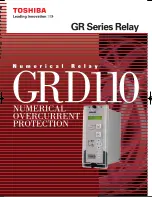
- 5 -
Fehler - Störungen
• Erdschluss bei Wechselspannung: Die
Versorgungsspannung bricht zusammen
und die Sicherheitskontakte werden
geöffnet.
• Erdschluss bei Gleichspannung: Eine
elektronische Sicherung bewirkt das
Öffnen der Ausgangskontakte; die LED
“EXT.FAULT” leuchtet auf.
• Wird im Schaltmattenbetrieb die Schalt-
matte betätigt, fallen die Relais ab und
die LED “EXT.FAULT” leuchtet während
der Betätigung. Eine Aktivierung ist in
diesem Zustand nicht möglich. Ist die
Schaltmatte wieder im Ruhezustand,
kann das Gerät wieder aktiviert werden.
Schaltmatten-Auslösung und
Querschlusserkennung sind nicht
nullspannungssicher.
Nach Wegfall der Störungsursache ist das
Gerät nach Ablauf der Wieder-
bereitschaftszeit nach Querschluss (siehe
techn. Daten) wieder betriebsbereit.
• Fehlfunktionen der Kontakte: Bei
verschweißten Kontakten ist nach Öffnen
des Eingangskreises keine neue Aktivie-
rung möglich.
Faults/Disturbances
• Earth faults with AC units: The supply
voltage is interrupted and the safety
contacts open.
• Earth faults with DC units: An electronic
fuse causes the output contacts to open;
The LED “EXT.FAULT” illuminates.
• If any connected Safety mats are
operated, the relays drop out and the LED
“EXT.FAULT” illuminates during
operation. Activation is not possible in
this condition. If the Safety mat returns
to its rest condition, the unit can be
activated once more. Safety mat
triggering and recognition of shorts
across contacts are not non-volatile.
Once the cause of the disturbance is
removed, the unit is ready for use after
the recovery time following short across
contacts(see techn. data) has elapsed.
• Faulty contact functions: In the case of
welded contacts, no further activation is
possible following an opening of the input
circuit.
Erreurs- Défaillances
• Mise à la terre (en AC): la tension
d’alimentation s’écroule et les contacts de
sécurité s’ouvrent.
• Mise à la terre (en DC): le fusible
électronique déclenche et provoque
l’ouverture des contacts de sécurité; la
LED “EXT.FAULT” s’allume.
• En cas d’utilisation avec un tapis sensi-
ble, une pression sur le tapis provoque la
retombée des relais internes et la LED
“EXT.FAULT” s’allume. Le réarmement
du relais n’est alors possible qu’après la
disparition de la pression sur le tapis. Le
déclenchement du relais et la détection
de court-circuit ne sont pas mémorisés.
Après la disparition du défaut, le relais est
à nouveau prêt à fonctionner au bout du
temps de remise en service après court-
circuit (voir charactéristiques techniques).
• Défaut d'un contact: en cas de collage
d'un contact après ouverture du circuit
d'entrée, un nouvel réarmement est
impossible.
S1/S2: Not-Halt- bzw. Schutztürschalter/Emergency Stop Button, Safety Gate Limit Switch/Pousssoir AU, détecteurs de position
S3:
Starttaster/Reset Button/Pousssoir de réarmement
S4:
Not-Halt-Taster/Emergency Stop Button/Pousssoir AU
Tür offen/Gate open/Porte ouverte
Tür geschlossen/gate closed/Porte fermée
betätigtes Element/Switch activated/Elément actionné
Legende/Key/Légende:
Fig. 5: Anschlussbeispiel für externe
Schütze/Connection of external contactors/
relays/câblage des contacteurs externes
14
K4
K5
13
Y1
Y2
K4
K5
1L1
1L2
Fig. 6: Anschlussbeispiel für Halbleiteraus-
gänge/Connection of semiconductor
outputs/câblage des sorties statiques
E0.0
+ 24V
E0.1
E0.2
E0.3
A0.0
A0.1
A0.2
A0.3
0V
SPS
Y32
Y31
Y30
S34
14
24
B2
A2
PNOZ 16S
Y35
S33
S31 S21
S32 S22
S11
S12
S33
S34
Y1
Y2
S1
Fig. 7: Eingangskreis zweikanalig; Not-Halt-
Beschaltung; automatischer Start/Two
channel input; Emergency Stop wiring;
automatic reset/commande par 2 canaux;
circuit d’arrêt d’urgence; réarmement
automatique
PLC API






































